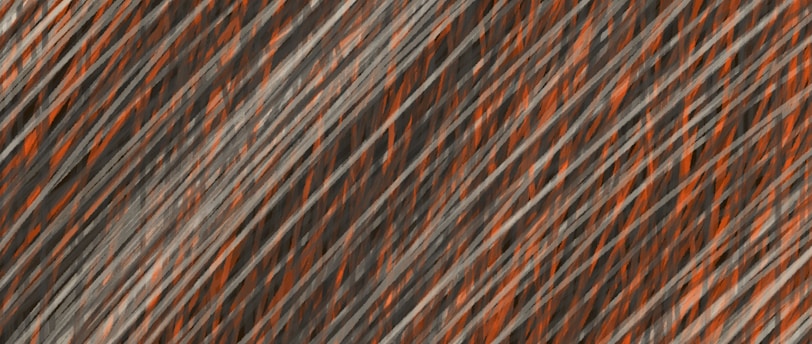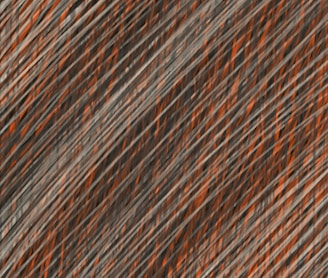Bamboo Fabric: Eco-Friendly and Soft to the Touch
Bamboo fabric is a textile material made from the pulp of bamboo plants. The process of making bamboo fabric involves breaking down the bamboo plant into a pulp, which is then spun into yarns and woven into fabric.
FABRIC GUIDE
Saleem Shahzad
6/2/20237 min read


Introduction
What is bamboo fabric?
Bamboo fabric is a textile material made from the pulp of bamboo plants. The process of making bamboo fabric involves breaking down the bamboo plant into a pulp, which is then spun into yarns and woven into fabric. The resulting fabric is soft, lightweight, and breathable, making it a popular choice for clothing and bedding. Additionally, bamboo fabric is known for its eco-friendliness, as bamboo plants are fast-growing and require less water and pesticides than other crops. This makes bamboo fabric a sustainable and environmentally conscious choice for those looking to reduce their carbon footprint.
Why is bamboo fabric eco-friendly?
Bamboo fabric is considered eco-friendly because of the sustainable and renewable nature of bamboo as a plant. Bamboo grows quickly and requires minimal water and pesticides, making it a low-impact crop. Additionally, bamboo fabric production uses a closed-loop process that recycles water and chemicals, minimizing waste and pollution. Bamboo fabric is also biodegradable, meaning it will naturally break down over time without harming the environment. Overall, choosing bamboo fabric over traditional fabrics can have a positive impact on the environment and promote sustainable fashion practices.
Benefits of using bamboo fabric
There are numerous benefits of using bamboo fabric. Firstly, it is an eco-friendly option as bamboo is a highly sustainable crop that requires minimal water and no pesticides to grow. Additionally, bamboo fabric is naturally hypoallergenic and antibacterial, making it a great choice for those with sensitive skin. It is also incredibly soft to the touch, with a texture similar to silk or cashmere. Bamboo fabric is also highly breathable, making it perfect for warm weather clothing. Lastly, it is a durable material that can withstand multiple washes without losing its shape or softness.
How is bamboo fabric made?
Harvesting bamboo
Harvesting bamboo is a sustainable process that involves cutting the bamboo stalks at the base, leaving the roots intact to regrow. Unlike other crops, bamboo does not require replanting after harvesting, making it a highly renewable resource. Additionally, bamboo grows quickly and can reach maturity in just a few years, making it an ideal crop for sustainable farming practices. The harvesting process also has minimal impact on the environment, as it does not require the use of harmful chemicals or heavy machinery. Overall, bamboo is a highly sustainable and eco-friendly crop that is becoming increasingly popular in the fashion industry.
Processing bamboo into fabric
Processing bamboo into fabric involves several steps. First, the bamboo is harvested and the leaves and outer layers are removed. The remaining bamboo is then crushed and soaked in a solution of sodium hydroxide and carbon disulfide to break down the fibers. This process is called "cooking" and results in a pulp that is then washed and bleached. The pulp is then spun into yarn and woven into fabric. Some manufacturers use a closed-loop system to recycle the chemicals used in the process, making it even more environmentally friendly. The end result is a soft, breathable fabric that is perfect for clothing and bedding.
Types of bamboo fabric
There are three main types of bamboo fabric: bamboo rayon, bamboo linen, and bamboo cotton. Bamboo rayon is the most common type and is made by dissolving bamboo pulp into a viscous solution that is then extruded into fibers. Bamboo linen is made by mechanically processing the bamboo plant into fibers, similar to the process used to make linen from flax. Bamboo cotton is a blend of bamboo and cotton fibers, resulting in a fabric that is both soft and durable. Each type of bamboo fabric has its own unique properties and uses, but all are eco-friendly and sustainable alternatives to traditional fabrics.
Advantages of bamboo fabric
Softness and comfort
Bamboo fabric is known for its softness and comfort, making it a popular choice for clothing and bedding. The fibers of bamboo fabric are naturally round and smooth, which creates a silky texture that is gentle on the skin. Additionally, bamboo fabric is highly breathable and moisture-wicking, which helps to regulate body temperature and keep you cool and dry throughout the day or night. Whether you're looking for a cozy pair of pajamas or a lightweight summer dress, bamboo fabric is a great option for those who prioritize comfort and softness.
Breathability and moisture-wicking
Bamboo fabric is known for its excellent breathability and moisture-wicking properties. The fabric is highly absorbent and can absorb up to three times its weight in water, making it an ideal choice for activewear and sportswear. The moisture-wicking properties of bamboo fabric help to keep the skin dry and comfortable by drawing sweat away from the body. Additionally, the breathability of bamboo fabric allows air to circulate freely, keeping the body cool and comfortable in hot weather. These properties make bamboo fabric an excellent choice for those who lead an active lifestyle or live in hot and humid climates.
Antibacterial and hypoallergenic properties
Bamboo fabric is not only eco-friendly and soft to the touch, but it also has antibacterial and hypoallergenic properties. This means that it naturally resists the growth of bacteria and fungi, making it a great choice for those with sensitive skin or allergies. Additionally, bamboo fabric is highly absorbent, wicking away moisture and preventing the buildup of odors. These properties make bamboo fabric a popular choice for clothing, bedding, and towels. Plus, since it is a renewable resource that requires minimal water and pesticides to grow, it is a sustainable choice for those looking to reduce their environmental impact.
Durability and longevity
Bamboo fabric is not only eco-friendly and soft to the touch, but it is also incredibly durable and long-lasting. The fibers of bamboo fabric are strong and resilient, making them resistant to wear and tear. Additionally, bamboo fabric is naturally antibacterial, which means it can resist odors and stains without the need for harsh chemicals. With proper care, bamboo fabric can last for years, making it a sustainable and cost-effective choice for clothing and home textiles.
Sustainability and eco-friendliness
Bamboo fabric is a sustainable and eco-friendly alternative to traditional fabrics. Bamboo is a fast-growing plant that requires minimal water and no pesticides or fertilizers to grow. Additionally, bamboo plants release more oxygen into the atmosphere than other plants, making them a great choice for reducing carbon emissions. The production process for bamboo fabric also uses less water and energy compared to traditional fabrics like cotton. Overall, choosing bamboo fabric is a great way to reduce your environmental impact while still enjoying soft and comfortable clothing.
Uses of bamboo fabric
Clothing and apparel
Clothing and apparel made from bamboo fabric are becoming increasingly popular due to their eco-friendliness and softness. Bamboo fabric is naturally moisture-wicking, making it a great choice for activewear and undergarments. It also has natural UV protection, making it a good option for outdoor clothing. Bamboo fabric is also hypoallergenic and gentle on sensitive skin, making it a great choice for baby clothing. Additionally, bamboo fabric is durable and can withstand multiple washes without losing its softness or shape. Overall, bamboo fabric is a versatile and sustainable option for clothing and apparel.
Bedding and linens
Bamboo fabric is an excellent choice for bedding and linens. It is naturally hypoallergenic, making it ideal for those with sensitive skin or allergies. Additionally, bamboo fabric is highly absorbent, wicking away moisture and keeping you cool and comfortable throughout the night. Its soft and silky texture also adds a luxurious feel to your bedding, making it a great option for those who want to indulge in a little bit of luxury while still being eco-friendly. Overall, bamboo fabric is a great choice for anyone looking to upgrade their bedding and linens while also making a positive impact on the environment.
Towels and bathrobes
Bamboo fabric is an excellent choice for towels and bathrobes. The fabric's softness and absorbency make it perfect for drying off after a shower or bath. Additionally, bamboo fabric is naturally antibacterial, which means it can help prevent the growth of bacteria and odors that can linger on towels and bathrobes. This makes bamboo towels and bathrobes a great choice for those with sensitive skin or allergies. Plus, bamboo fabric is durable and long-lasting, so you can enjoy your bamboo towels and bathrobes for years to come.
Accessories and home decor
Bamboo fabric is not only great for clothing, but it also makes for excellent accessories and home decor. Bamboo towels are highly absorbent and soft, making them a popular choice for bathrooms. Bamboo sheets are also becoming increasingly popular due to their softness and breathability. Additionally, bamboo rugs and curtains can add a touch of natural elegance to any room. Bamboo is also a sustainable material for furniture, such as chairs and tables, as it is durable and eco-friendly. With its versatility and eco-friendliness, bamboo fabric is a great choice for all your accessory and home decor needs.
Conclusion
Summary of benefits
In summary, bamboo fabric offers a multitude of benefits that make it a popular choice for eco-conscious consumers. It is a sustainable and renewable resource that requires minimal water and pesticides to grow. Additionally, bamboo fabric is naturally hypoallergenic, moisture-wicking, and breathable, making it ideal for those with sensitive skin or who live in hot and humid climates. Its soft and silky texture also provides a luxurious feel, while its durability ensures it can withstand frequent washing and wear. Overall, bamboo fabric is a smart and stylish choice for those looking to reduce their environmental impact without sacrificing comfort or quality.
Future of bamboo fabric
The future of bamboo fabric looks promising as more and more consumers are becoming aware of the environmental benefits of using sustainable materials. With the fashion industry being one of the largest polluters in the world, bamboo fabric offers a viable alternative to traditional fabrics that are harmful to the environment. As technology advances, the production process for bamboo fabric is also improving, making it more accessible and affordable for consumers. As a result, we can expect to see a rise in the popularity of bamboo fabric in the coming years, as more people seek out eco-friendly and sustainable options for their clothing and home textiles.
Final thoughts
In conclusion, bamboo fabric is a sustainable and eco-friendly alternative to traditional textiles. It offers a soft and comfortable feel, making it a popular choice for clothing, bedding, and other household items. Additionally, bamboo fabric has natural antibacterial and moisture-wicking properties, making it a practical choice for those with sensitive skin or who live in humid climates. While it may be slightly more expensive than other fabrics, the benefits to both the environment and personal well-being make it a worthwhile investment. Overall, bamboo fabric is a great choice for those looking to make a positive impact on the planet while still enjoying high-quality textiles.
